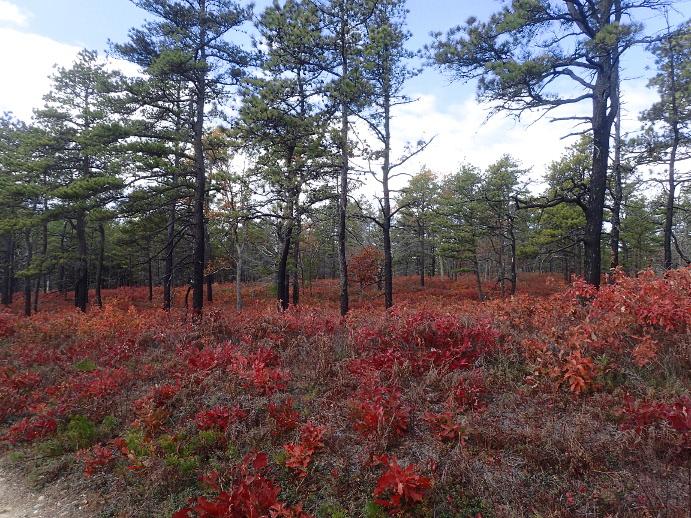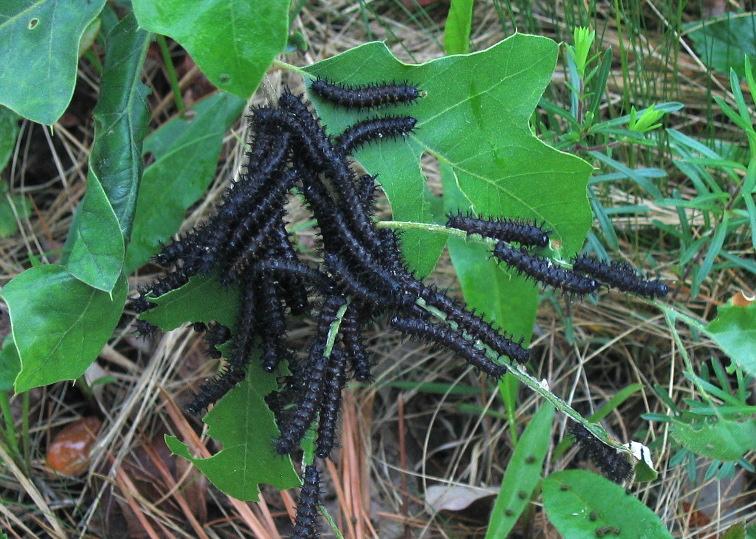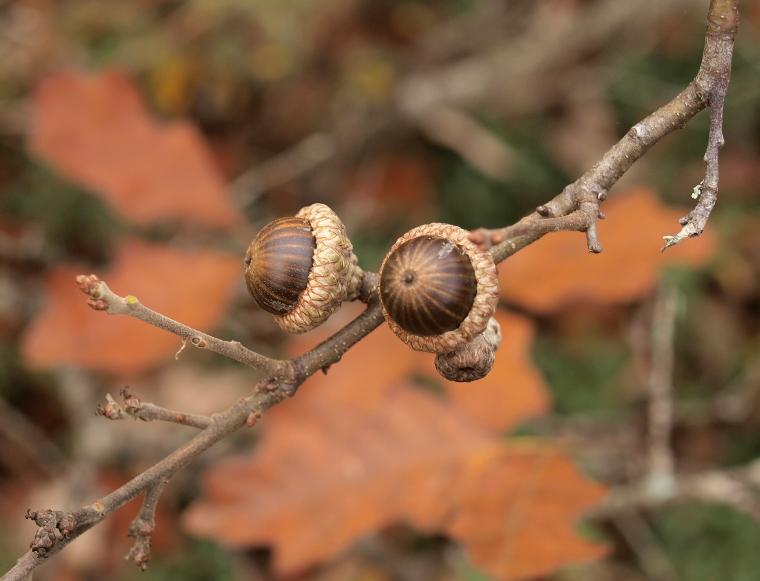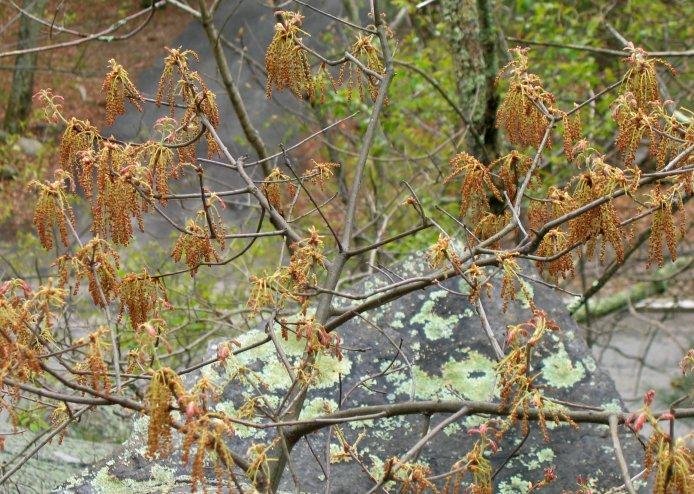Scrub Oak
Quercus ilicifolia
Scrub or bear oak, a native of the eastern US and southern Canada, occurs on sandy soil or else on open rocky outcrops. In
the pitch pine barrens, it is the major component of the principal "pitch pine/scrub oak" plant community. This is mostly
a shrub with stubby, gnarled branches, only rarely becoming a small tree. Scrub oak is adapted to disturbance in the habitat,
such as wildfire, which helps remove other plant species. This way scrub oak can receive enough sunlight (it does not tolerate
shading). Oak flowers are wind pollinated, male ones arranged in drooping catkins, female borne singly or in small clusters.
Leaves of scrub oak are smaller than leaves of tree oaks, contrastingly light-colored underneath, having only a couple weakly
pronounced lobes on each side. The lobes are pointed, fortified with tiny bristles (awns) at tips. The epithet ilicifolia means "with leaves resembling those of Ilex, i.e., holly" (leaves of American holly do look similar). Scrub oak provides food and shelter for many animals. Bears consume
the acorns, especially when preparing for hibernation. White-tailed deer eat stems and foliage along with the acorns. Squirrels
and birds also depend on the acorns; turkeys in fact prefer them over other types of food. A large number of insect species
live on scrub oak. This is the main food plant for about one-third of rare or endangered butterflies and moths in southern
New England and southeastern New York.

Pitch pine/scrub oak forest, Myles Standish SF, November 5

Buck moth caterpillars on scrub oak, Myles Standish SF, June 12. Buck moth is an insect of special concern in MA.

Scrub oak acorns, Myles Standish SF, October 12

Beginning of flowering in mid-April; leaves are not yet out.